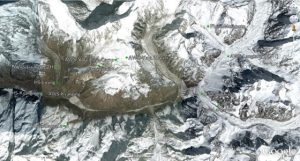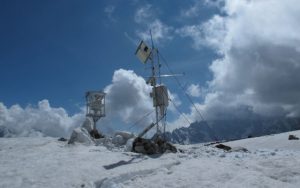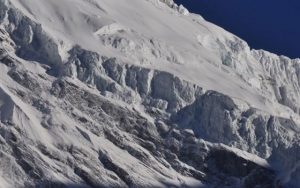This site uses cookies, as explained in our terms of use. If you consent, please close this message and continue to use this site.

Langtang Valley has been the focus of intense glaciological, meteorological, and hydrological fieldwork over the past four years as part of the Norwegian-supported cryosphere monitoring project. Twelve meteorological and hydrological stations installed across Langtang valley have been pivotal in training regional and international post-graduate students through research conducted in ICIMOD’s Cryosphere Initiative. These stations collect important meteorological (air temperature, wind speed, solar radiation, precipitation) and hydrological (water level) data that have been used in a number of high-impact publications.

The stations were substantially damaged by the 7.8 magnitude earth quake that hit Nepal on 25 April 2015. A four member survey team led by Joseph Shea (Glacier Hydrologist, ICIMOD), Patrick Wagnon (Visiting scientist, ICIMOD/IRD), Gyalbu Tamang (Kyanging), and Djornay Lama (Langtang) visited the stations sites in Langtang to assess the damage in June 2015, two months after the quake. Five meteorological stations were destroyed by air blasts from avalanches in the valley, one was toppled by the earthquake, and one station was completely buried by the high snowpack. One hydrological station was damaged by the air blast that hit Kyanging Gompa.

A team of ICIMOD researchers visited the valley in October 2015 to repair the main stations at Kyanging and Yala Base Camp, and carried out maintenance on the rest of the stations.
|
Stay up to date on what’s happening around the HKH with our most recent publications and find out how you can help by subscribing to our mailing list.
Sign Up